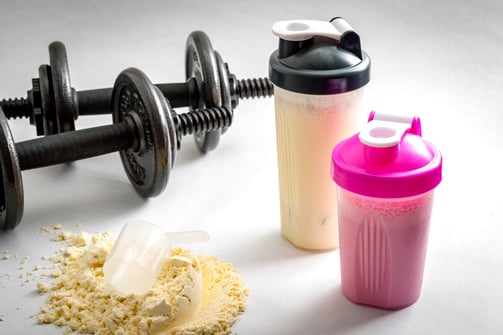 Thousands of sports nutrition supplements are touted to improve strength, endurance, and a variety of other athletic factors. But do they work and are they necessary? Below are some of the most common supplements advertised for athletes, as well as what they do, how well they work, and how much is safe to supplement. It’s important to note that you should always consult your physician or a registered dietitian specializing in sports medicine before starting any new supplement.
Thousands of sports nutrition supplements are touted to improve strength, endurance, and a variety of other athletic factors. But do they work and are they necessary? Below are some of the most common supplements advertised for athletes, as well as what they do, how well they work, and how much is safe to supplement. It’s important to note that you should always consult your physician or a registered dietitian specializing in sports medicine before starting any new supplement.
Beta-alanine
During intense exercise, your muscles produce lactic acid, which can reduce muscular force and cause fatigue. Beta-alanine, an amino acid, produces carnosine, a molecule that can help reduce the buildup of lactic acid, which has shown to produce small performance improvements in sports that require high-intensity, intermittent effort over short periods, such as swimming, hockey, and football in some studies; however, its efficacy for endurance activities such as cycling and running isn’t clear.
In healthy adults, beta-alanine supplementation is generally safe. The most common side effect reported is paresthesia, a tingling or burning sensation in the upper body, typically lasting 60–90 minutes after consumption. If you’re interested in supplementing with beta-alanine supplements, the International Society of Sports Nutrition recommends taking 4 to 6 grams each day (1 to 2 grams at meals) for at least 4 weeks.
BCAAs
Leucine, isoleucine, and valine make up the branched-chain amino acids (BCAAs), which are used to provide energy to the body during exercise and might also stimulate protein synthesis in exercised muscle. Short-term studies have shown that BCAA supplementation might enhance overall muscle mass and strength during training, but it is unclear if BCAAs are more effective than any other high-quality protein supplement. While supplementation of up to 20 grams/day in divided doses is generally safe according to the NIH, it is not always necessary because most individuals can take in adequate amounts by consuming plenty of complete proteins that provide all of the essential amino acids together, like meat, poultry, fish, eggs, and dairy products.
Carnitine
Carnitine is a compound thought to help preserve muscle glycogen and spare the use of amino acids during exercise so that they are available for new protein synthesis. The research available to support the effectiveness of supplementation is limited, however, and available evidence is mixed. Additionally, healthy individuals do not need to consume carnitine from food or supplements because it is synthesized sufficiently by the body itself.
Creatine
Creatine is a compound produced naturally in the body (about 1 gram/day), and obtained nutritionally by consuming animal-based foods or supplements, that is stored in the muscles and used for energy. Most sports experts agree that supplementing with creatine is generally safe and can improve certain types of performance, specifically those that involve repeated short bursts of intense intermittent activity (like sprinting or weightlifting), but tend to have little value for endurance exercises, such as cycling, swimming, or long-distance running. For optimal results, experts recommend taking in at least 20 grams of creatine per day (4 doses of 5 grams) for between 5–7 days, before decreasing to a maintenance level of around 3 to 5 grams total daily. Creatine monohydrate is the form most commonly used, recommended, and studied.
The Bottom Line
The supplements discussed above are generally safe when used in the recommended amounts. Many of them are unnecessary for healthy people who consume the correct nutrients. Again, always consult your physician or a dietitian specializing in sports medicine before starting any new supplement.
This blog was written by Lindsey Recker, MS, Registered Dietitian. To learn more about the NIFS bloggers, click here.

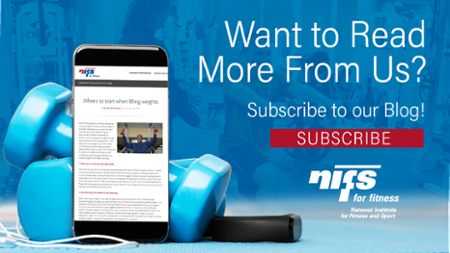
 Improving maximal aerobic capacity, aka VO2Max, as well as lactic threshold can have a huge impact on overall performance. You can improve
Improving maximal aerobic capacity, aka VO2Max, as well as lactic threshold can have a huge impact on overall performance. You can improve 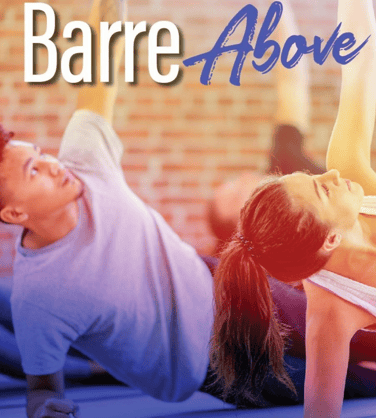 Are you looking for a workout to strengthen and tone muscles without increasing bulk, but have not found anything that you like doing? Have you always wanted to increase your cardiovascular endurance and metabolism but hate doing regular old boring cardio? Well I might have an answer for you…
Are you looking for a workout to strengthen and tone muscles without increasing bulk, but have not found anything that you like doing? Have you always wanted to increase your cardiovascular endurance and metabolism but hate doing regular old boring cardio? Well I might have an answer for you… 
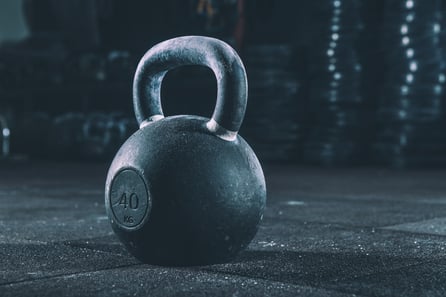 The Russian kettlebell is unique among exercise tools. It is an offset-handle weight that travels easily between the legs in a pendulum movement that can be easily seen in the kettlebell swing (two-hand and one-hand swings). If done correctly, the hips hinge straight backward as if you were trying to push a swinging door open while holding a tray. If you squat, even a little bit, there is little rearward movement and the door doesn’t open. Hip power is lost.
The Russian kettlebell is unique among exercise tools. It is an offset-handle weight that travels easily between the legs in a pendulum movement that can be easily seen in the kettlebell swing (two-hand and one-hand swings). If done correctly, the hips hinge straight backward as if you were trying to push a swinging door open while holding a tray. If you squat, even a little bit, there is little rearward movement and the door doesn’t open. Hip power is lost. 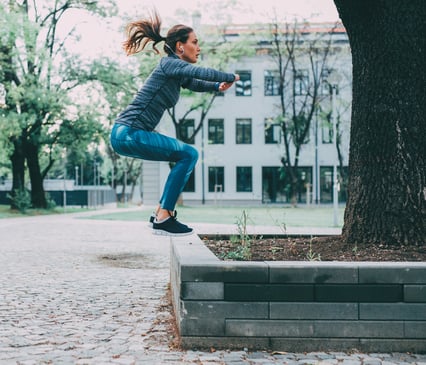 In a world where situations are ever-changing and a new “normal” is developing, athletes around the world are scrambling to adapt to their new training environments. For most, this new environment is where you are probably reading this now, your home. For the time being and for many people, traditional training methods of using barbells, dumbbells, kettlebells, etc. have morphed into substitutions of paint cans, backpacks, gallon jugs, or just about anything that can act as the “resistance” that your body has become accustomed to using.
In a world where situations are ever-changing and a new “normal” is developing, athletes around the world are scrambling to adapt to their new training environments. For most, this new environment is where you are probably reading this now, your home. For the time being and for many people, traditional training methods of using barbells, dumbbells, kettlebells, etc. have morphed into substitutions of paint cans, backpacks, gallon jugs, or just about anything that can act as the “resistance” that your body has become accustomed to using. 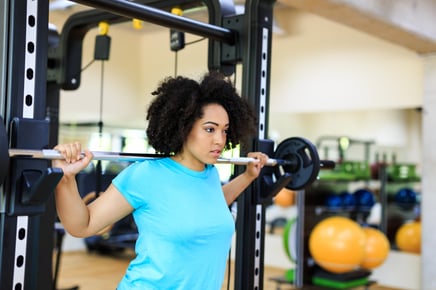 It’s time to get serious about goal setting. Setting goals can help you dig more deeply into fitness and think about what you truly want to accomplish. Goals can range from wanting to walk 1 mile to squatting 2 times your body weight, and absolutely everything in between and beyond. Everyone is on a different path to fitness, so whatever your goals may be is completely up to you.
It’s time to get serious about goal setting. Setting goals can help you dig more deeply into fitness and think about what you truly want to accomplish. Goals can range from wanting to walk 1 mile to squatting 2 times your body weight, and absolutely everything in between and beyond. Everyone is on a different path to fitness, so whatever your goals may be is completely up to you. In recent years, carbohydrates have seemingly been blamed for our health problems. Many of us now shun potatoes, rice, and even fruit in fear of the dreaded pounds that could come with eating carbohydrates. While many diets demonize carbohydrates, others preach the benefits of higher-carbohydrate diets. Through all of this confusion, I will try to set the record straight.
In recent years, carbohydrates have seemingly been blamed for our health problems. Many of us now shun potatoes, rice, and even fruit in fear of the dreaded pounds that could come with eating carbohydrates. While many diets demonize carbohydrates, others preach the benefits of higher-carbohydrate diets. Through all of this confusion, I will try to set the record straight.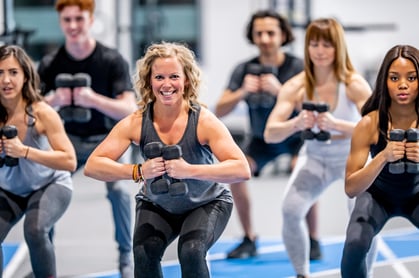 How do you define fitness? Whatever your answer is, it will shape the way you work out, influence the goals you set, and impact your long-term health. Although everyone might have different perceptions of what “fitness” means, the American College of Sports Medicine has defined what
How do you define fitness? Whatever your answer is, it will shape the way you work out, influence the goals you set, and impact your long-term health. Although everyone might have different perceptions of what “fitness” means, the American College of Sports Medicine has defined what 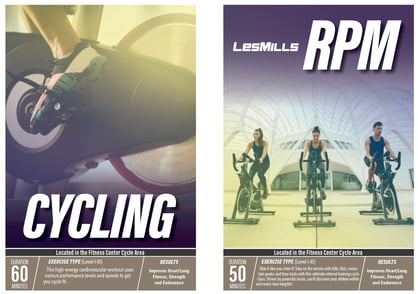 Cycling is becoming one of the most popular trends in group fitness. Not only is it a great class to take for the cardio benefits and calorie burn, cycling is a great resistance-based workout that can also increase strength. Many cycling classes are tracked in two ways, by
Cycling is becoming one of the most popular trends in group fitness. Not only is it a great class to take for the cardio benefits and calorie burn, cycling is a great resistance-based workout that can also increase strength. Many cycling classes are tracked in two ways, by 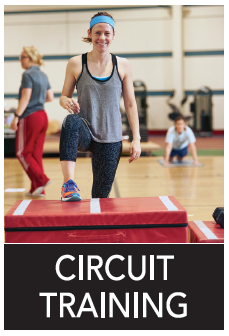 To achieve electricity, you need a complete circuit; the same thing goes for achieving a higher level of fitness, which is why circuit training is a great total-body workout. It can be classified as a type of endurance training, resistance training, strength training, or high-intensity interval training, which is why we can see great results from it.
To achieve electricity, you need a complete circuit; the same thing goes for achieving a higher level of fitness, which is why circuit training is a great total-body workout. It can be classified as a type of endurance training, resistance training, strength training, or high-intensity interval training, which is why we can see great results from it.
